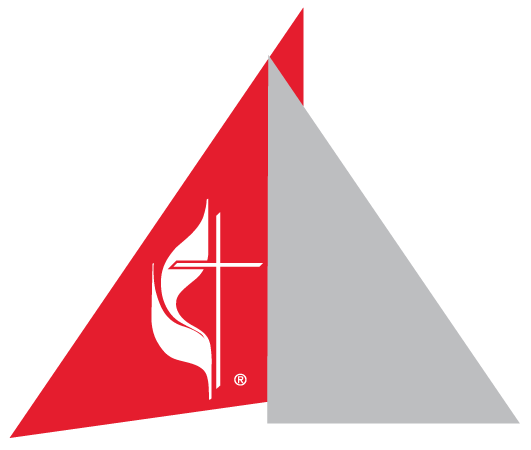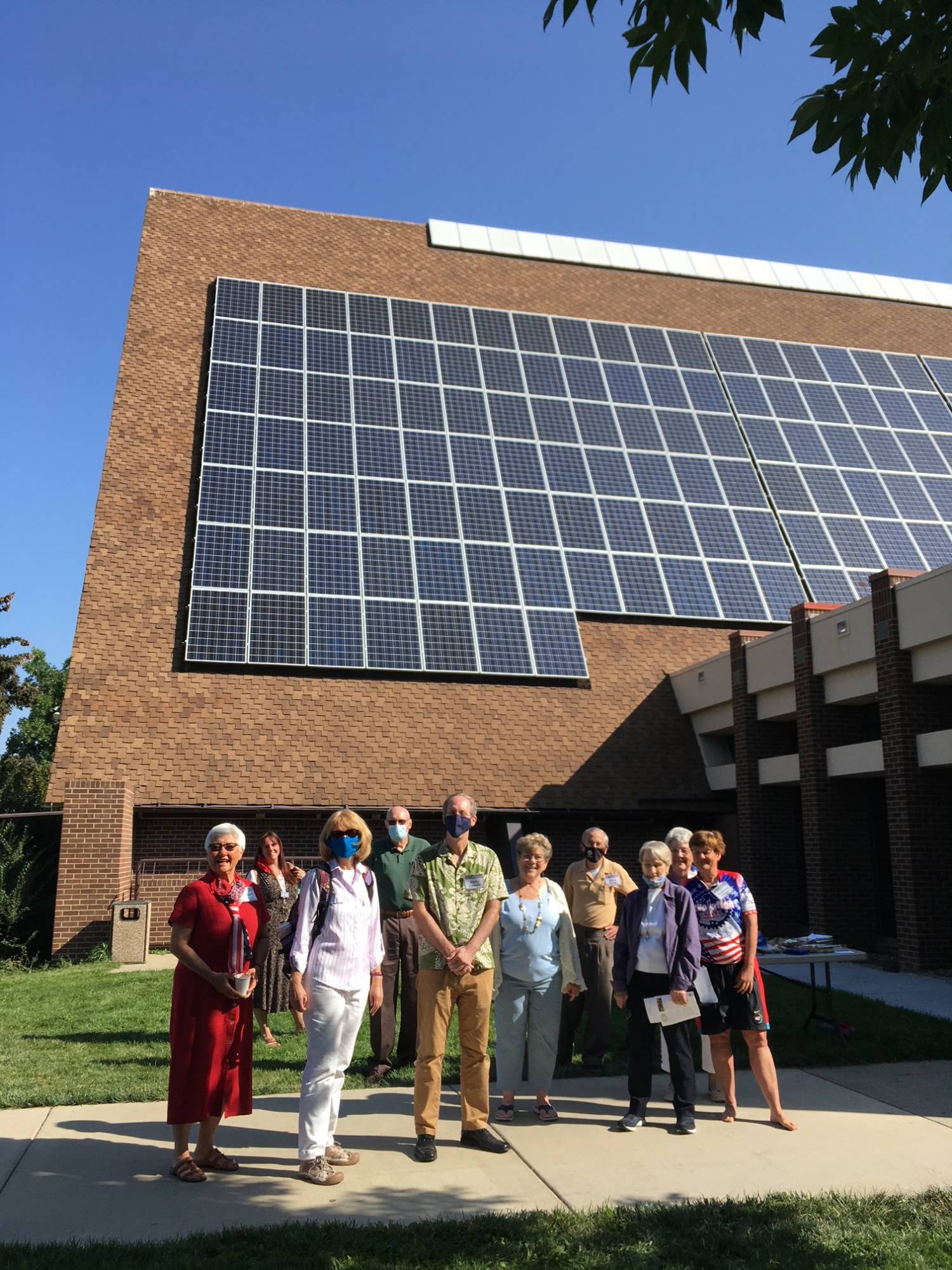Mountain View United Methodist Church
Mountain View United Methodist Church
Boulder, Colorado
Mountain View United Methodist Church has reduced their carbon footprint by 40% and is preventing approximately 70 tons of emissions from entering the atmosphere annually. One unique element of their multifaceted plan is an energy management system that monitors peak load to keep it under the 25kW lower rate limit of their utility provider to save energy and money.

Rev. Stephanie Kidwell says, “As members of The United Methodist Church we are committed to approaching creation, energy production, and especially creation’s resources in a responsible, careful and economic way. We call upon all to take measures to save energy – this is part of the United Methodist Social Principles. Mt View takes this charge seriously, and continually looks for ways to do this.”
Read about their projects in the words of Patricia White, a member of the congregation who says, “We were concerned about the effects of climate change on our planet, and wanted to be part of the solution instead of part of the problem.”
“The Green Earth Team and The Solar and Electric Standing Committee at Mountain View are composed of around 10-12 environmentally conscious church members who worked on the energy saving upgrades.

A few of the team members
The combination of several projects allowed the team to reduce Mountain View’s carbon footprint by nearly 40% or 70 tons, including the installation of 187 solar panels in 2010-2011, replacement of outdated fluorescent lighting, installation of 26 LED efficient building exit signs, replacement of old refrigerators and a freezer, installation of LED spotlights in the sanctuary, and upgrades to the HVAC unit, among other projects.
The Green Earth Team was interested in lowering the church’s carbon footprint by reducing their electricity consumption by installing solar panels, but they knew they would have to convince the church members that the solar panels would be a cost saving endeavor for the church in order to get them to agree to make the financial commitment. After considerable educational efforts, they were able to get the church to agree to finance the project.
187 panels were purchased at $400 each for $74,800 total. Their estimated savings are $10,000 annually. Not only are they providing all of their own electricity needs, they are producing an additional 12,000 kWh to put back to the grid.
Team member Gary Schmitz said the system was financed in part by contributions from church members “who bought 100 of the 187 solar panels at $400 each, raising $40,000. The remaining cost was covered through a 15-year second mortgage, which made the monthly utility bill, plus the second mortgage, less costly than the old system.”
Schmitz worked out the financials when Mountain View was raising money from members for the solar panels and continued working with the technical support to reduce peak loads. Despite the success in lower electricity consumption, the church’s energy consumption during peak-load periods was costing $7,000 per year. Together they decided to add an energy management system “that could shed specified loads for a time to keep our peak electricity usage under 25 kilowatts,” Schmitz said. “By doing that, we could comply with Xcel’s lower rate structure, and save Mountain View $7,000 per year.”
According to Howe, “The management system could turn off an air conditioner for 15 minutes, for example, or switch off the 6 kilowatt commercial dishwasher until the other loads had dropped. Normally this wasn’t necessary but on a hot summer Sunday with sudden cloud cover, this was crucial to stay under the 25-kilowatt threshold.”
Natural gas consumption also has been cut, Walls said, “by replacing single pane windows with dual pane models, and adding external insulation to the foundation and to the inside of some walls, for example crawl spaces that aren’t in public places,” he said.
Before deciding to “become green,” the church was paying more than $10,000 annually for electricity as of 2008. After beginning its energy-saving programs, Mountain View’s solar project became operational in mid-2011 and quickly reduced the amount of electricity needed from Xcel Energy, earning the church 4.5 cents per kilowatt hour produced.
By 2011, Mountain View’s net electricity costs were cut in half to $5,500 annually thanks to solar and other improvements. After adding an energy management system to the solar project in 2012, net electricity costs were reduced even further, according to Green Team member Gary Schmitz. By 2015, Mountain View was receiving payments from Xcel of $2,557 annually and it was saving the $12,098 it would have paid in 2015 for electricity for a total savings of $14,655, of which $6,471 is used to pay for the solar mortgage.

A programable thermostat is part of the energy saving efforts
Mountain View United Methodist Church began purchasing carbon offsets annually in 2016 to offset their remaining emissions of 110 tons. The purchase of carbon offsets in May 2016 was the final step in a five-year-long series of actions to reduce carbon emissions that allowed Mountain View to declare themselves carbon neutral in 2016. They were the first building in Boulder County to do so.
NEXT STEPS, a Greener Parsonage, from Patricia White
Our area was impacted by a huge wildfire in January of 2022. The fire was made so much worse by the hurricane force winds. Many homes in the area sustained wind damage along with the homes that were fire damaged. Our church parsonage was one of the buildings that suffered wind damage. The parsonage required a new roof and insulation, so the Green Earth Team (GET) lobbied for the new roof to be able to support solar panels and for the highest rated insulation available. The church and insurance paid for those improvements. Arthur Howe, Green Team member, was able to obtain grant money to pay for the solar panels to be added to the parsonage. The Green Team then had the idea to push a little further. We advocated for installation of an EV charging station in the garage. The EV station will be paid for with GET funds.
According to the engineers on our team, the gas and electricity consumption at the parsonage for 2020 gave off 4.5 tons of CO2. For 2021 it gave off 5.6 tons of CO2. The new roof and insulation should save between 30-50% of the gas used for winter heating. Eliminating the gasoline usage for the parsonage with an EV would save 5 tons of CO2, so that would make the parsonage and its occupants carbon neutral. The solar panels will be installed on the parsonage in September of 2022.
The GET has had two major fundraising efforts in the last decade or so. In December we have a table at the Advent Marketplace. We sell sustainable items. I have made cloth, reusable gift bags, and we sell cloth, reusable grocery bags with the church logo on the front. It’s good advertising for the church when you go shopping. We also sell local honey (I’m a beekeeper), quiches, jellies, homemade greeting cards, etc. The second fundraiser is on Earth Day Sunday. We have a luncheon after church with an environmental education program. GET members usually provide matching funds for the money raised.
Mary Beth Downing, the GET chairperson, has worked to create the Creation Justice task force in the Mountain Sky Conference. They have six working groups: local church engagement, legislative advocacy, just energy collaboration with UWM/UWF, communications, annual conference and the UMC Movement group. They are trying to organize across the Mountain Sky Conference which includes Colorado, Utah, Montana, Wyoming and a little bit of Idaho.
Here is the link, so that you can read about their mission statement. https://www.mtnskyumc.org/creation-justice
Also, this year we are using some of our funds to plant 4-6 trees on the church property.
Mountain View United Methodist website: http://www.mtview.org


